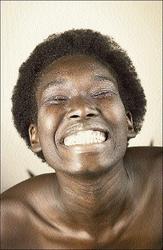
When patients have a 'bad bite', we call this malocclusion. This may appear in the form of crowded teeth, misaligned teeth, cross bite, overbite, underbite or open bite. Ideally, upper teeth fit slightly over lower teeth. Teeth are paired, aligned, straight and spaced proportionally in the jaw with corresponding teeth on the opposite jaw.
Malocclusion is the most common reason for referral to an orthodontist. By treating malocclusion, the teeth become straight and there is less risk of tooth decay and periodontal diseases. Treatment also eliminates strain on the teeth, jaws and muscles.
Overcrowded mouth
Your teeth patterns can be inherited from your parents. There may be a disproportion between the upper and lower jaw or between jaw and tooth size resulting in overcrowding or abnormal bite patterns. Extra teeth, malformed teeth, impacted teeth or lost teeth and abnormal eruption of teeth may contribute to malocclusion.
During infancy, personal habits like thumb sucking, tongue thrusting, pacifier use above the age of three and prolonged use of a bottle can greatly affect the shape of the jaw. The improper fit or use of dental fillings, crowns, appliances, retainers or braces may lead to malocclusion. Misalignment of jaw fractures, severe injury and tumour of the mouth or jaw may cause malocclusion as well.
Wire and spring treatment
Braces or other appliances may be used to correct teeth positioning. Metal bonds are placed around some teeth and metal, ceramic or plastic bonds are attached to the surface of the teeth. Wire and springs are used to apply force to the teeth. One or more teeth may need to be removed if overcrowding is part of the problem. Surgery may be required in some cases, for example, to lengthen or shorten the jaw.
Problems with teeth alignment are easier, quicker and less expensive to treat when they are corrected early.
Treatment is most successful in children and adolescents because their bone is still soft and teeth are moved more easily. Treatment may last between six months and two years, but may be extended depending on the severity of the case. Treatment in adults is often successful but may require longer use of dental appliances.
Dr Dennis Jones is a dentist in private practice; email: yourhealth@gleanerjm.com.


